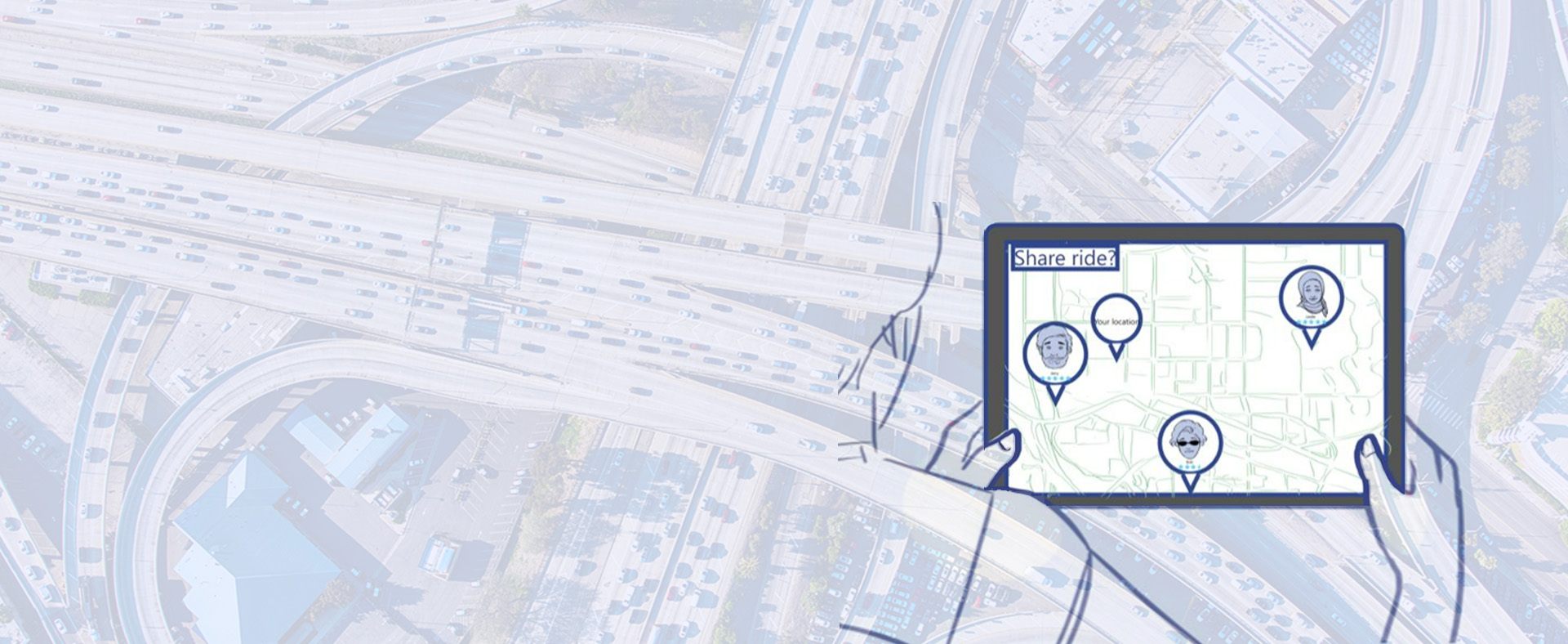Even before a global pandemic kept many of us in our homes, there was a major transformation underway in how we move through our days. Private cars and public transit were being supplemented by new innovations like ride-sharing services or shared scooters and bicycles, summoned from mobile devices—giving people even more flexibility for getting around town in ways that are often faster, cheaper and more climate-friendly. Even as circumstances kept us away from the office, our need to move around didn’t go away—a significant portion of the population could not work from home, and many others still needed to get around town to buy groceries, run errands, or visit the doctor.
Some lucky Microsoft Outlook users recently found it just a little bit easier to get around—they participated in a trial of a new ride-scheduling and optimization technology that has been bolstered by a decade of foundational work from Microsoft researchers. Each time customers scheduled a meeting or appointment away from their home, Outlook automatically found the optimal way for them to get from point A to point B—just the right combination of rideshare services, carpools, and public transportation, and the trial later explored shared bikes and scooters. It seems simple—but doing it right, at scale, required many significant breakthroughs in several different research areas.
Over the years, researchers at Microsoft have been working on more ambitious ways to use technology to help us get around—not just finding the most efficient way to get from place to place, but also to optimize our transportation infrastructure: such as by using lower-carbon options where appropriate, or organizing ad-hoc ride-sharing to reduce single-passenger trips or to optimize trips for people who would like to travel together. For individuals and institutions, innovations such as this save money and time. And for society, this helps reduce our carbon footprint.
The complexity of finding the most efficient way to get from place to place is an enticing challenge for researchers—what seems like the magical ability to summon a car or unlock a bike on the street with your mobile phone today is actually built on years of research and innovation in areas such as resource optimization, predictive analysis, economics, behavioral psychology, and human-computer interaction. Advances in these areas can also be applied to many other business and societal challenges—from optimizing global shipping to keeping track of items in a warehouse.
Microsoft itself has a significant incentive to make transportation more efficient and environmentally friendly. In a sense, the company’s Puget Sound campus operates like a small city—including its own transportation systems—perfectly sized to learn more about how we might optimize transportation on larger scales. A scheduled and on-demand shuttle service moves employees around the campus’ 100-plus buildings every day. Employees working in the region also rely on a bus and van network called the Connector for their daily commute to the company’s campus, as they continue to take advantage of the area’s public transportation, shared bike and scooter systems, and ride-sharing services. In their work to build the next-generation of on-demand mobility, researchers used the local transportation network that serves Microsoft as a testbed.

This is the culmination of more than a decade of research into the most efficient ways to get people where they need to be—starting with some curiosity-driven exploration of transportation patterns on the Microsoft campus and in the Puget Sound area, continuing with studies on internal tools and systems for employees to use at work, and resulting in new transportation options for the company’s customers worldwide.
A brief history of mobility research at Microsoft
Microsoft introduced the first shuttle service on its campus in Redmond, Washington in 1988. At the time, the system served a handful of buildings on campus—by 2022, the company’s headquarters employees worked across more than 100 buildings throughout the region.
In 2009, researcher Eric Horvitz and then-intern Ece Kamar published a paper that introduces the idea of Agent-Based Carpooling (ABC), which addresses challenges of collaboration and coordination among self-interested people in order to minimize the cost of transportation and the impact of travel on the environment.
In 2018, this line of research began its journey from idea to implementation. Fittingly, that journey began in a car: unable to secure time on Eric Horvitz’ calendar to propose the project, Ed Doran, researcher and founder of the Mobility project, took an opportunity to ride with Horvitz to the airport. On the way, they discussed the project and agreed to pursue it further. Horvitz then continued on to his flight, and Ed, who actually didn’t have a flight to catch, returned to the office to launch Mobility as an applied research project, developing a solution based on the work noted above for internal testing and use. They began with the development of tools to organize and optimize carpools, then expanded them to include company shuttles, commercial ride-sharing systems, then public transit.
By 2020, the project moved over to E&D, where it is now in development. Meanwhile, the researchers who initiated this line of research at Microsoft have made some moves of their own. Ece Kamar joined Microsoft Research and is now a Partner Research Manager working on human-centric AI and other initiatives. Eric Horvitz took on a number of leadership roles at Microsoft Research and is currently serving as Microsoft’s first Chief Scientific Officer, where he provides leadership and perspectives on advances and trends relating to scientific matters, and on issues and opportunities rising at the intersection of technology, people, and society. Finally, Ed Doran, Paul Koch, and other members of the Mobility incubation team are still working on new incubations in Microsoft Research and Microsoft.

